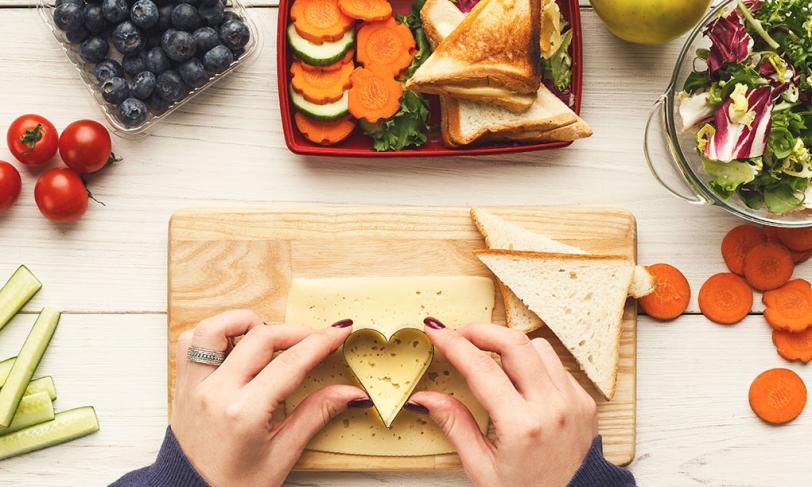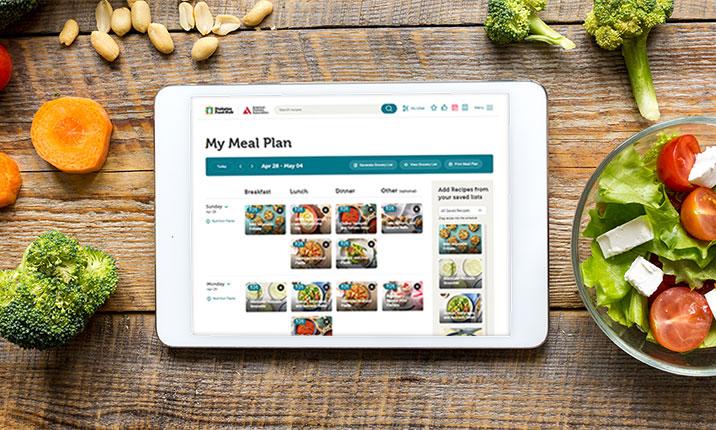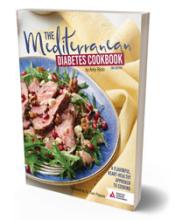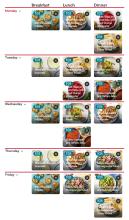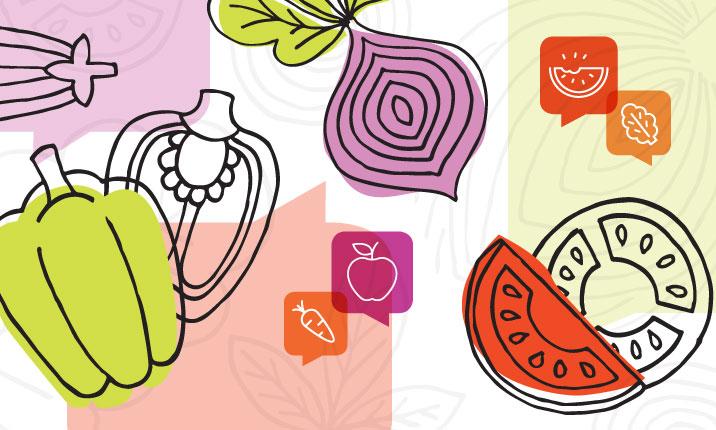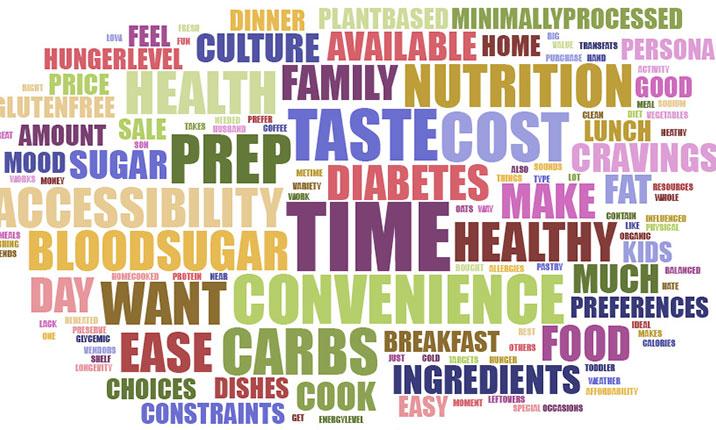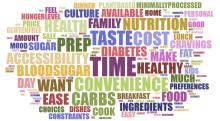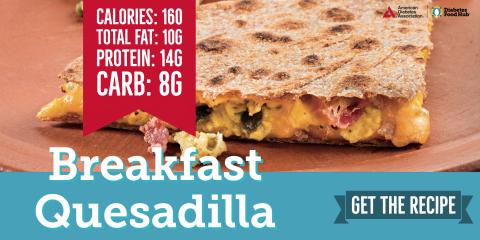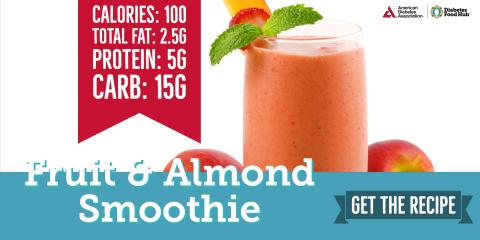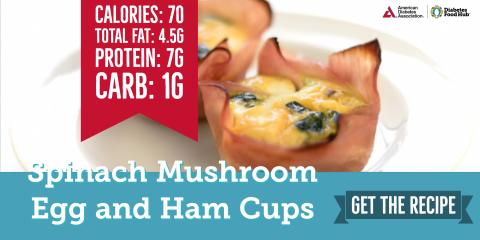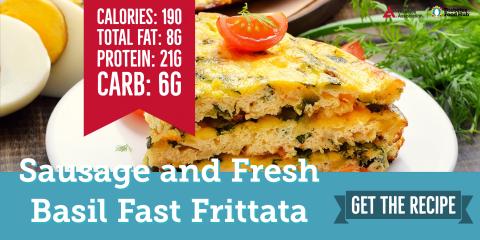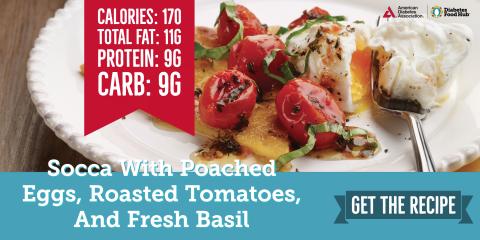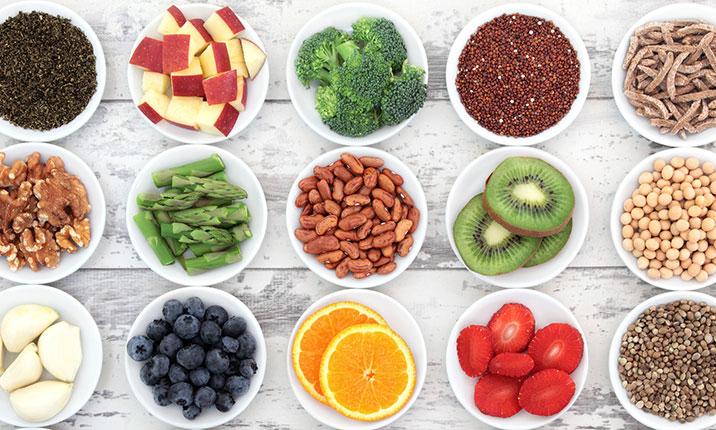As we wrap up 2019, the Diabetes Food Hub team looked back and reviewed some of the most popular recipes this past year as determined by you, our visitors. Favorites include heart-healthy Mediterranean dishes, hearty breakfast pancakes, and a handful of air fryer and Instant Pot recipes. Whatever you’re looking for, we’re sure you’ll find some tried and true recipes.
For our first full year of the Diabetes Food Hub, we saw a number of cooking and recipe trends that ended up on this list. First, we had no idea just how popular breakfast recipes would be. Second, a lot of people have Instant Pots and air fryers and are looking for appliance-friendly recipes. And finally, there’s a neverending demand for the basics—healthy and diabetes-friendly versions of classic recipes. Fortunately, Diabetes Food Hub had plenty of each.
So without further ado, here are the Top 20 Recipes of 2019.

Did we mention that breakfast was a popular category? This low-carb breakfast made with turkey sausage and turkey bacon comes from our friends at the Mr. Food Test Kitchen, and it was our most “liked” recipe of 2019. Freeze the individual cups after they’re prepared for a grab-and-go breakfast that can be reheated at home or in the office!

Air Fryer Buttermilk Fried Chicken
Is it possible to make fried chicken diabetes-friendly? Absolutely! Especially if you have an air fryer. This small appliance “fries” food with hot circulating air, drastically cutting the fat and calories from traditional deep frying. This recipe creates juicy, flavorful fried chicken by marinating the chicken in buttermilk, then coating it in a cornflake crust.

Smoothies are a popular category on Diabetes Food Hub, and it’s easy to see why. As a meal-replacement, a snack, or a quick and easy breakfast, smoothies can be very versatile. That said, they can also be an easy way to consume added sugars, so try not to add sweeteners beyond fruit. Get creative and mix up the types of fruits in this smoothie to keep things fresh.

Diabetes-friendly pancakes seemed like an impossible quest until the authors of The Diabetes Cookbook gave us this recipe. Finely chopped oats can make an easy, whole-grain alternative to flour in many recipes, including these pancakes. Skip the maple syrup, and try our recipe for Blueberry Sauce for a low-sugar topping!

These brownies are made with a surprising ingredient that gives them a nutrition kick and fiber boost that you won’t find in regular brownies. Perfect for those managing Celiac or a gluten intolerance, these brownies really shine with a fruit topping, such as raspberries or blackberries.

Instead of ordering takeout, make a healthier version of this classic Thai soup at home in your Instant Pot! This vegan soup is loaded with vegetables and gets it’s rich creaminess from coconut milk. Best of all, the Instant Pot speeds up the cooking time, so it’s ready in less than 30 minutes, but tastes like it’s been cooking all day!
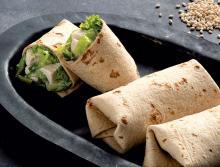
If you are tired of the same boring sandwich for lunch, try this restaurant-style wrap, featured in The Diabetes Cookbook. This is perfect if you find yourself with leftover chicken breast. If not, use cooked rotisserie chicken from your grocery store to save yourself a little time.

A recipe doesn’t have to be complicated to be delicious. This chicken dish was a Diabetes Food Hub favorite in 2019, perhaps because it is perfect for a busy weeknight dinner. Just remember to marinade the chicken the night before for extra flavor.

Need a healthy snack for your holiday road trip? This popular recipe is a simple treat—and much better for you than any processed snack that you get at a gas station. It will satisfy your sweet tooth while also packing in a lot of fiber.

Here’s another diabetes-friendly version of a classic recipe—this time the comfort food favorite, beef stroganoff. Using whole grain egg noodles ups the fiber content, and the fat-free sour cream cuts calories. Looking to save yourself some prep time? Buy presliced mushrooms to cut down on time at the cutting board.

Healthy eating can be done on a budget and this dinner proves it! Chicken thighs are less expensive than chicken breasts, and have a more savory flavor that’s perfect for braising. This makes a tasty, low-carb, budget-friendly meal.
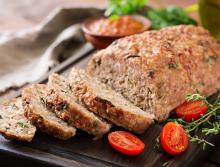
Does it get any more classic than meatloaf? Diabetes Food Hub visitors loved this herb-filled take on a family favorite in 2019. By using oatmeal in place of breadcrumbs you get more fiber than in the traditional version.

Fluffy eggs and spicy chiles folded into a tortilla with rich melted cheese makes breakfast a pleasure! You can use a variety of cheeses such as asadero, Monterey jack, and white cheddar. Looking for even more Tex-Mex flavor? Make a chorizo quesadilla by swapping out the bacon for 4 oz cooked beef or pork chorizo.

This recipe comes from Robyn Webb’s bestselling Diabetes Comfort Food Cookbook. According to Webb, the secret to makeing this recipe diabetes-friendly is using butter-flavored spray and phyllo dough to slash the saturated fat and calories found in a typical pie crust topping (without sacrificing any flavor)!

Making dessert for the holidays or another special occasion? This satisfying 2019 user-favorite dessert can be prepared ahead of time and refrigerated. Just before serving, portion it out and top with the whipped topping. The results are beautiful, delicious, and guaranteed to impress.

A popular request in 2019? More recipes that used herbs and spices to boost flavors without adding salt, fat, carbs, and calories. The star of this meal is the low-sodium herb blend that you can make in large batches and use to meat, fish, and even vegetables. Low-sodium eating does not have to be bland and boring. This recipe proves it.
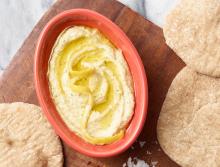
The research is in—numerous studies agree that the Mediterranean diet is one of the healthiest eating patterns in the world. This recipe can be made in a flash, and it combines all the bright flavors of Greece. Diabetes Food Hub visitors couldn’t get enough!
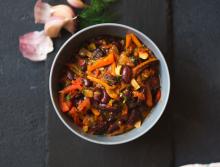
One-pot dishes are always popular—easy to make and a breeze to clean up—and this Veggie Chili recipe proved the trend wasn’t fading anytime soon. The beans and veggies in this dish make it a great source of fiber with 10 grams per cup. The recipe makes 8 servings, so you’ll have plenty leftover for lunch!

While this is technically a breakfast recipe (did we mention breakfast recipes are popular?), it can easily be served any time of day. The savory blend of roasted tomatoes and perfecty broiled eggs is delicious, but the real story is how easy and inexpensive it is to prepare. If you can get your hands on fresh heirloom tomatoes, this recipe really shines.

Seafood is a true superfood: it’s packed with healthy fats, high in protein, and the foundation of healthy eating patterns like the Mediterranean diet. Out of the hundreds of seafood recipes on Diabetes Food Hub, this one stood out as our most popular of 2019. With just a few ingredients, you can have a beautiful, heart healthy meal on the table in about 15 minutes.

Who doesn’t love tacos? Closing out our top 20 list is a Tex-Mex classic. Break out your slow cooker or Instant Pot, prep in the morning, and come home to tender braised taco meat when you walk through the door in the evening. Flank steak is a leaner cut of red meat, which makes it very heart healthy and great for a diabetes meal plan.
More to Come…
We’ve been amazed at the response to our Diabetes Food Hub and have been thrilled to see the audience for the site grow leaps and bounds over the past year. In 2020, we’ll be making the site even better by adding hundreds of new recipes and adding even more interactive meal planning and shopping features. We hope you’ll stop back by to see all that we have in store. In the meantime, thank you for making Diabetes Food Hub the number one diabetes food and cooking website on the web!



